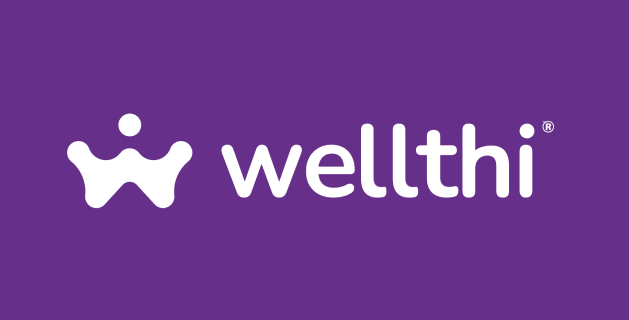When it comes to investing, the debate between active and passive strategies can get intense. Investors and wealth managers often have strong preferences for one approach over the other. While passive investing has gained popularity among investors, there are also arguments in favor of active investing. Let’s explore both strategies and understand how they can help you achieve your financial goals.
Active Investing: Seizing Opportunities and Maximizing Returns
Active investing is all about taking a hands-on approach. It involves actively managing your portfolio or entrusting it to a professional portfolio manager. The goal is to outperform the average returns of the stock market by capitalizing on short-term price fluctuations. Active investing requires in-depth analysis, expertise, and the ability to make timely decisions.
Successful active investment management requires a high level of confidence and the ability to make more right decisions than wrong ones. It involves analyzing qualitative and quantitative factors, studying market trends, and predicting when to buy or sell stocks, bonds, or other assets. Active investors constantly monitor their investments and make adjustments based on changing market conditions.
Passive Investing: Long-Term Growth and Cost-Effectiveness
On the other hand, passive investing is all about long-term growth and minimizing costs. Passive investors adopt a buy-and-hold strategy, limiting the amount of buying and selling within their portfolios. This approach is cost-effective since it involves fewer transactions and lower fees.
One common passive investing strategy is to invest in index funds that track major market indices like the S&P 500 or Dow Jones Industrial Average (DJIA). These funds automatically adjust their holdings to match the changes in the underlying index. By owning a piece of thousands of stocks, passive investors benefit from the overall upward trajectory of corporate profits over time. They focus on long-term goals and stay committed to their investment plan, even during market downturns.
Understanding the Key Differences
Passive and active investing have their own strengths and weaknesses. Let’s take a closer look at what sets them apart.
Advantages of Passive Investing:
- Ultra-low fees: Passive funds have lower fees since they don’t require active stock picking and constant monitoring.
- Transparency: Investors can easily track the assets held in an index fund, ensuring transparency.
- Tax efficiency: Passive strategies often involve less frequent buying and selling, resulting in lower capital gains taxes.
Disadvantages of Passive Investing:
- Limited investment options: Passive funds are bound to a specific index or set of investments, offering little room for variation.
- Moderate returns: Passive funds typically match the market’s performance, making it unlikely to outperform it significantly.
Advantages of Active Investing:
- Flexibility: Active managers have the freedom to choose investments they believe will yield higher returns.
- Hedging: Active managers can use various techniques to manage risks, such as short sales or put options.
- Tax management: Active managers can tailor tax strategies to individual investors, maximizing their after-tax returns.
Disadvantages of Active Investing:
- Higher expenses: Active funds tend to have higher expense ratios due to transaction costs and research expenses.
- Active risk: The freedom to choose investments can lead to higher risk if the analysts’ predictions turn out to be wrong.
Finding a Balance: Blending Active and Passive Strategies
While the debate between active and passive investing continues, many experts recommend blending the two strategies. This approach helps diversify portfolios, minimize risk during volatile periods, and take advantage of the benefits of both styles.
For example, investors with a large cash position may actively look for opportunities to invest in ETFs after market pullbacks. Retirees focused on income can actively select specific stocks for dividend growth while maintaining a long-term mindset. Combining active and passive strategies allows investors to make informed decisions and manage risk effectively.
Realizing the True Potential: Risk-Adjusted Returns
When evaluating investment strategies, it’s essential to consider risk-adjusted returns. Risk-adjusted returns measure the profit gained from an investment while considering the level of risk taken to achieve that return. By controlling the allocation of funds to different sectors or companies during rapidly changing market conditions, investors can protect their capital and optimize returns.
Looking at the Data: Passive Investing Prevails
Extensive research and studies consistently demonstrate that passive investing tends to outperform active investing over the long term. Active mutual fund managers often struggle to beat their benchmark index, with a majority failing to fulfill their goals. Reports from reputable sources reveal that passive strategies have delivered more consistent returns after accounting for taxes and trading costs.
Passive Investing on the Rise
The popularity of passive investing continues to grow. As of 2021, approximately 54% of U.S. mutual fund and ETF assets are invested in passive index strategies. This shift is expected to continue, with passive investing predicted to overtake active trading by 2026.
Navigating Your Investment Journey
Ultimately, the choice between active and passive investing depends on your financial goals, risk tolerance, and investment preferences. Most financial advisors recommend a balanced approach that combines both strategies. By blending active and passive investing, you can create a well-diversified portfolio and position yourself for long-term success.
Remember, investing is a personal journey, and what matters most is achieving your unique financial objectives. Consult with a trusted financial advisor or use investment tools to help guide you along the way. Together, we can navigate the world of finance and make meaningful progress toward our financial goals.
DIG DEEPER
- Investment Strategies and Portfolio Management, Wharton
- SPIVA: 2022 Year-End Active vs. Passive Scorecard SPIVA U.S. Scorecard
- What Is Passive Investing? Investopedia
- How Active and Passive Strategies Can Work Together Morning Star





